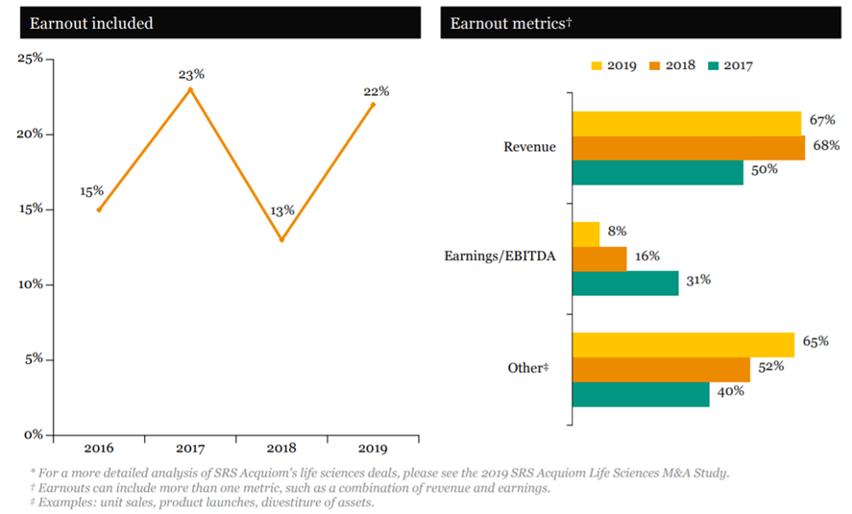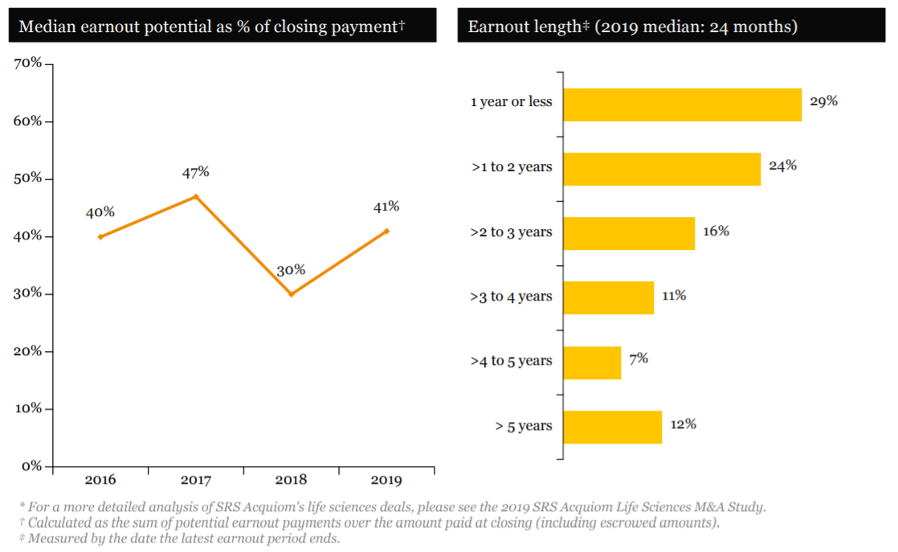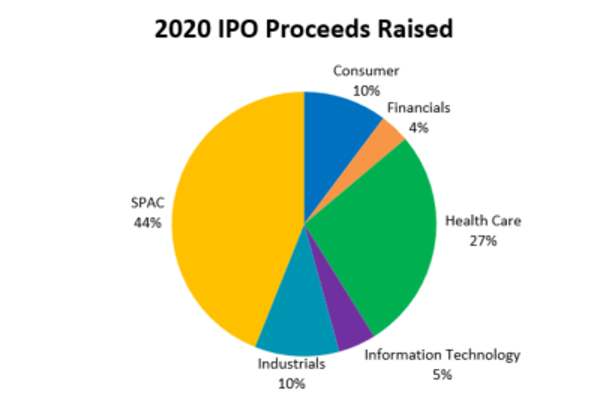Conducted by Jessica C. Pearlman[*], republished from The Business Lawyer.
Interviewer’s note: In September of 2019, after wrapping up meetings of the Mergers and Acquisitions (“M&A”) Committee of the Business Law Section of the American Bar Association (“ABA”), I took the train from Washington, D.C. to New York City to meet with Marty Lipton—the well-known founder of Wachtell, Lipton, Rosen & Katz—in a conference room at his firm. It was perfect timing to have this conversation with Mr. Lipton, given recent developments relating to corporate views on the constituencies corporations may take into account in their decision-making. What ensued was a ninety-minute, one-person master class in corporate governance with a touch of personal detail about Mr. Lipton’s life and experiences sprinkled in for good measure (effectively a fireside chat without the fire). How do you know you are chatting with a legal lion? For one, the sheer number of footnotes needed to adequately direct the reader to all the varied source material on corporate governance Mr. Lipton freely referenced without notes. What is presented here is in the order it was discussed, and it has been condensed and edited for clarity.
JESSICA PEARLMAN (“JP”): I know you were born in New York. I know you went to the Wharton School of the University of Pennsylvania and then on to law school at New York University. I know that just like every other person from New York who went to the Wharton School and law school at NYU, you became a household name in M&A. But tell me about your background before that. Where did you grow up?
MARTY LIPTON (“ML”): I was born in Jersey City, and I grew up in Jersey City. I lived there until I went off to Penn. Thereafter, I basically lived in Manhattan the rest of my life.
JP: So when did you decide law school was for you?
ML: At the Wharton School, I was thinking about going into investment banking or law. In any event, it was one of those spur-of-the-moment decisions that law school would be a good idea. And I just decided, “Well, I’ll try to get into law school.” It was late. It was after graduation that I decided that. And I applied to NYU and got in.
JP: Did you apply anywhere else?
ML: No, I applied to NYU and I got in. I didn’t think I could possibly get into Columbia because it was far too late, but someone told me that it was possible to get into NYU if you had a decent average. And I had taken the LSAT, and I had a pretty good LSAT score, so I got in. And I got interested in corporate law at NYU. The dean at that time at NYU was Russell Niles. He was a very interesting man and a major factor in my life. He was what I would call a “talent hunter.” He thought that the NYU law school should have some homegrown talent, and I had ended up being the editor-in-chief of the law review, and he wanted me to teach.
JP: So you did OK in law school is what you’re telling me?
ML: Yes. And he wanted me to teach and got me interested in it. He arranged for me to have a teaching fellowship and study with Adolf Berle at Columbia. So off I went to Columbia to get a JSD degree. Berle wanted me to write a thesis on the changes that would have to take place in corporation law as institutional investors began to acquire large amounts of shares of public companies—
JP: So around what year was this?
ML: 1955.
JP: So you’ve been thinking about the role institutional investors play in corporate governance since 1955?
ML: Yes, since ’55. In any event, I wasn’t smart enough to figure out what changes would need to take place. I never did complete a thesis. I keep teasing my friends at Columbia that I’m going to package up all the law review articles I’ve written since and send it up in exchange for the degree.
JP: I think just your email bulletins alone—you can send those in.
ML: I then clerked for a federal judge, and Niles kept in touch with me and kind of hung a string on me. And he said, “You really ought to spend a year or two with a corporate law firm before coming back to teach.”
JP: Was this an unusual path at the time, or were pathways like this more common? Now there’s such a regimented path: summer associate; go to the firm; clerkship for a year first, perhaps.
ML: First of all, there were very few summer associates in those days. Some of the major firms had them, but it wasn’t pervasive by any means, and my experience was somewhat unique because here, somebody spotted me for teaching and wanted me to do that. So I joined a firm, Seligson Morris & Neuberger, and two or three months after I started, I was at a reception at the law school, and Niles asked me what I was doing. I said, “Well, I’m working on a registration statement for an oil company.” And a couple of days later he called me and said that the then professor who was teaching Securities Regulation had died, and I should take over his class two days hence. And then he said, “And don’t worry, Marty—the following week I’ll have someone who knows how.”
JP: [Laughter]
ML: And so for the next twenty years, I taught Securities Regulation and occasionally Corporate Law on an adjunct basis. I did an M&A seminar at one point, but it was basically securities regulation and some corporate law. And I finally had to give it up in ’79. Takeover activity had blossomed in the ’70s, and I was always on the road then. I always had to have a partner standing by to fill in for me. So I gave it up.
JP: But your assistant told me you’re teaching this afternoon.
ML: Well, that is a long story. I ended up becoming chairman of the law school board and then chairman of the university. So during that entire period—some twenty-seven years—I didn’t teach. But as soon as I retired as chair of the university board, I decided I’d go back to teaching, and I’m teaching a corporate governance seminar with Ed Rock, who heads the NYU Institute for Corporate Governance and Finance.
JP: This is a fascinating time to be teaching this particular topic.
ML: It is fascinating. It’s amazing what’s happened over the years. You know, when I think back to Berle, in 1932, in addition to having written The Modern Corporation and Private Property,[2] he had written a law review article to the same effect[3]—that shareholders should exercise control over the professional corporate management that had started to come in at the beginning of the century with the major companies that had been family owned going public. And he had a law review dispute—one of these back-and-forth articles with Merrick Dodd, who taught corporation law at Harvard.[4] And Dodd thought that the purpose of a corporation was to serve not just shareholders but all of its stakeholders. And so there was this difference of view starting in 1932. And that continued.
JP: The stakeholder role—was that looked at as largely being the workforce at that time? What was viewed as other stakeholders? It certainly wasn’t the environment.
ML: It was not so much the environment but employees, customers, suppliers, and the community. There was a lot of focus on corporations supporting the community. There were fewer giant corporations at that time, but almost every major city in the country had two or three significant corporations, and the communities were dependent on those corporations for supporting philanthropic activities and so on. But clearly the concept of community was more than just the town. It was if there are interests that are affected by a corporation, other than shareholders, other than employees, and so on. The idea was not shareholder primacy but rather that all stakeholders should be considered by the board of directors.
JP: Not only the shareholders.
ML: Not only the shareholders.
JP: And that debate, of course, continues.
ML: It’s going on right now as we speak, but it hasn’t been a constant discussion. The Great Depression kind of overwhelmed everything, and any discussion of corporate governance or such was subsumed. Berle went off to Washington as one of the brain trusters for FDR. And much of what might have been considered areas for stakeholder governance became part of the New Deal legislation affecting employees, affecting the quality of goods being sold, and so on. There was not a great interest until after the Second World War, when—starting in 1946—business boomed, and from ’46 into the ’60s, conglomerates were being formed, and new businesses were being formed, and so on.
JP: Post-war prosperity.
ML: Post-war prosperity. And unions had become powerful and represented the employees, so the pressure for employees as stakeholders really became a question of union representation of the employees. The New Deal legislation had created the Fair Labor Standards Act and various other acts that protected employees, so that it ended up with no real focus from a corporate standpoint. That’s where I was in 1955. There was really no new material in the law reviews—it was 1932 and then nothing. Major events had overwritten everything else.
JP: Was it a sense that with strong labor unions that employee stakeholders were well represented, and so changes to the corporate governance model to protect the workers weren’t needed?
ML: I don’t know if that was the thinking or not, but maybe. Certainly that is a reasonable explanation. What I ended up focusing on in trying to do a thesis was that maybe these institutional investors could be considered control persons if they had enough stock or in some way acted together, and that’s how you could impose fiduciary duties on them in their relationship to the corporation. And I wrote a couple of memos to that effect. In 1957 or ’8, Berle wrote an article along that line;[5] nothing definitive but posing the possibility of that as a means of dealing with this new quasicontrol factor of institutional investors. This brings us to 1962 and Milton Friedman, who sort of was the key person in the Chicago School of Economics, which was at The University of Chicago but also included some people from MIT and Harvard thinking along the same line. In ’62, in a treatise he wrote,[6] he argued that in order to have a successful economy, the purpose of a corporation was to maximize returns for shareholders. And the gang in the Chicago School were coming up with things like the efficient market theory and picking up on Berle’s 1932 shareholder control of the corporation, the agency cost theory that Michael Jensen pushed in the ’70s,[7] and so on. So in 1970, Friedman published an op-ed in The New York Times Magazine,[8] arguing for shareholder primacy, and that the purpose of the corporation is to maximize the return to the shareholders.
And that caught hold in both the business schools and in the law schools, and it literally became the doctrinal policy that was recognized as what is necessary for a successful economy. Joe Stiglitz and one or two other economists not of the Chicago School were debating that, but far and away, this had taken hold.
By 1979, I was—if not 100 percent, 99.9 percent involved in defending against hostile takeovers. And I had been giving opinions that the board of directors had within its business judgment the ability to reject a hostile tender offer, and that they were not bound to accept any offer. But there was no precedent for that. There was no statute that said that. The best you could argue by analogy from Delaware law, for example, was that in order for the shareholders to consider a merger, the board of directors had to recommend it for shareholder vote. So obviously, if the board of directors had to recommend a merger, why would you cut the board of directors out of deciding on a takeover by tender offer?
JP: So by extrapolation?
ML: Yes. In any event, I thought it would be a good idea to write a law review article that said that, so that one, it would focus attention on it, and two, it would make me feel more comfortable in giving opinions. So I wrote Takeover Bids in the Target’s Boardroom, which appeared in The Business Lawyer in ’79.[9] And that immediately brought down the wrath of the Chicago School on me, all arguing that everybody knows that the sole purpose is to benefit the shareholders. Frank Easterbrook and Dan Fischel—two lawyers but also both economists—started to write articles attacking my article.[10]
JP: Did you anticipate that when you wrote the law review article?
ML: No—no. I didn’t really anticipate it. Pretty soon, I found myself spending more time exchanging articles than practicing.
JP: [Laughter]
ML: So the sides were taken, and during all of this period, the activity continued. There were no definitive decisions. We (my colleagues and I) were involved in trying to fashion what we called “shark repellants” and amend charters to try and make takeovers more difficult.
JP: One of the questions I have for you is, “How did the poison pill come about?”
ML: The poison pill came in ’82, and at the same time, we were fiddling with anti-takeover statutes for states to enact and constituency statutes modeled after the takeover bids article[11] so that states would enact statutes, and some thirty-three states ultimately did, essentially enacting into law what the article said: that in dealing with a takeover, the board of directors had it within its business judgment to consider the long term, not just the short term, and the stakeholders—employees, customers, suppliers, and the community. Takeover activity continued to grow. Junk bonds came into play, and we weren’t as successful as we had been in getting injunctions—TROs—against hostile takeovers.
And one day, I was reading an indenture for a convertible debenture issue with a non-destruction provision to protect the option value of the conversion feature. And so I said to myself, “Why couldn’t I issue warrants with a provision to adjust the exercise price in the event of a merger not at the market equivalent, which merely preserves the option value, but at a very big bargain price, so that anyone who acquires the company by a 51 percent cash bid and merges out the 49 percent for junk bonds would suffer a huge dilution to their common stock by consummating the merger?” And so first, I wrote an internal memo for everybody here to look at and shoot at. And I became satisfied, and basically everybody became satisfied, that we were on to something.
JP: Do you still have that internal memo?
ML: Oh, yeah.
JP: Part of the thesis papers that you will submit? [Laughter]
ML: And so in September of 1982, I sent it out as a client memo that we’re recommending this.
It’s a little hard to imagine today how much focus there was on hostile takeovers and junk bonds in that period. Everybody was running around, and it was a period of greenmail and a great deal of activity. Every investment banker was out there trying to sell its services one way or another.
In any event, the general feeling in the legal community was, “Nonsense—it’s not legal.” Then in December of ’82, the Burlington Northern Railroad made a hostile bid for the El Paso Corporation, and we used a variation of the poison pill for El Paso. Burlington Northern ran to court to get a temporary restraining order, and they didn’t get it—it was denied. Ultimately, the situation was resolved in a settlement, so there was no final legal decision. But there was a decision denying a temporary restraining order—which, of course, is not precedent, but it stimulated interest. And so in six defenses during ’83, we used it. And each time it was litigated, it never went to a final judicial decision, but there were no restraining orders or injunctions against it, and it started to get more and more credibility. Investment bankers started to recommend it and so on.
Then came ’84 and one of those things you kind of never forget. I wasn’t in the office. I was home, and a call came through: “My name is Donald Clark. I am the chairman of Household International Corporation. I understand you have something called a poison pill, and I think I need one.” And that gave rise to Household v. Moran,[12] the Delaware decision sustaining the pill. And Donald Clark was one of those great clients. He sat through the trial. He came to the appeal in the Delaware Supreme Court. He never lost faith in it.
That, of course, was that period of the big four Delaware cases—Van Gorkum[13] and Unocal[14] and Household[15] and Revlon[16]—which set the framework for corporate governance ever since.
JP: And are taught in every law school.
ML: Yes. Those four cases are the pillars of the framework of corporate governance. And of course, Unocal cited the Takeover Bids article[17] for authority on stakeholders.
JP: When did the name “poison pill” get coined? Is that in your memo to clients?
ML: No. The last thing in the world we wanted was for it to be called “poison pill.” Remember, there’s no decision that this is legal. The last thing you wanted was, “Judge, this poison pill—you know, it’s legal, Judge. There’s no poison in this.” [Laughter] No, it was an investment banker at Kidder Peabody. The last use in ’83 was for the Lenox China Company, which was the target of a hostile bid by Brown Foreman. And The Wall Street Journal called him and said, “Well, what do you call the securities you dividended out?” He said, “Oh, we call it a poison pill.” The next day, The Wall Street Journal has this article—skull and crossbones, “poison pill.”[18] We were not happy. And the opponents—actually, in the Household case it was Skadden Arps—they didn’t hesitate at using the name “poison pill” as a legal argument.
JP: Holding that against you?
ML: Yes, so that’s how that evolved. And also ’85 is when ISS[19] was formed by Neil Minnow and Bob Monks. And the Council of Institutional Investors was formed by Jay Goldin, who was the comptroller of New York City, and Jesse Unruh, who was the treasurer of California. So you had these two organizations basically representing institutional investors.
JP: Taking a shareholder primacy approach.
ML: Yes, exactly. And undertaking a legal campaign against poison pills and staggered boards, and really from ’85 through 2007, you had a continuous round of fundamentally increasing shareholder power supporting shareholder primacy. The only thing that held it up was the poison pill.
But the attack on staggered boards was largely successful, so that if a company didn’t have a staggered board, you could have a proxy fight in one year—not two years—to change the board, and so on. It didn’t destroy the poison pill, but it took a lot of the strength away from it. In large measure, that period was one of increasing power of institutional investors, and interestingly enough, a huge increase in the percentage of public company shares that these institutions held. By 2007, for many of the major companies, 80 percent or more of the shares were institutionally held. And it was the beginning of the increase in the shares held by the indexers. The three indexers now account for like 20 percent. In those days, it was more like eight or nine or ten. But it was from 2008 to the current time that you had this big increase in the indexers’ holdings.
In this period, you had the accounting scandals at Enron and Worldcom in 2001. In 2002, you had Sarb-Ox[20] and the stock exchange corporate governance rules for listing. And then, of course, in 2009, you had Dodd-Frank[21] following the 2008 financial crisis.
So starting in 2008 and continuing to date, building as you go, you had a recognition that all of the things that were wrong with shareholder primacy had become the focus as a cause of the financial crisis in 2008. Short-termism, activism, use of junk bond financing, financialization of the economy—all of the things that were serious factors in causing the financial crisis needed attention. But it didn’t catch on right away. Chuck Schumer, then the majority leader in the Senate, had a bill, the Shareholders’ Bill of Rights,[22] to increase the power of shareholders—it was not a separate bill, but many of its provisions found its way into Dodd-Frank, which was enacted. And it would be fair to say that you now began a period in which there was a very significant focus on stakeholder governance and investing and managing for the long term.
JP: An unchecked market had led to a recession, so here’s a chance to regulate it.
ML: Yes. Steve Pearlstein, Brookings Institution and The Washington Post, wrote an outstanding article attacking shareholder primacy.[23] Joe Bower and Lynn Paine of the Harvard Business School wrote another article attacking it.[24] Some attention was paid to some of the articles that I had written. I had basically stayed on this path of, “Shareholders do not own the corporation; it is not property of the shareholders.” You know—the fundamental stakeholder approach. And so I revved up my memo activity and article activity on it.
Which pretty much brings us to where we are today. I mean, as a result of the post-2008 period, you have the Coalition for Inclusive Capitalism, you have Focusing Capital on the Long Term, you have Investor Stewardship Group, you have probably at least a dozen other organizations designed to promote stakeholder governance—long-term investment, not shortterm investment—and you have the World Economic Forum getting interested. They asked me to create a proposal for dealing with it and that led to The New Paradigm that was approved by the World Economic Forum in 2016.[25]
JP: In The New Paradigm, you’re talking about short-termism versus the longterm strategy for the corporation. All of that seems to be part of how to better achieve a stakeholder approach instead of a shareholder primacy approach. Am I interpreting it correctly?
ML: Yes. Basically, if you have a short-term approach, by definition, it’s shareholder primacy.
JP: “How much are your profits this quarter?”
ML: Yes. Or, “We’re selling a good company now,” or, “We’re undertaking a major financial restructuring in order to increase the price of the stock.” In other words, it’s the antithesis of investing for the long term because in order to create short-term action in the stock, you do things that are contrary to long-term investment.
JP: I want to ask you about special-purpose or so-called “B” corporations and how they fit into the big picture.
ML: Oh, they’re a great idea, except that while it’s caught on with some people, it’s a small percentage of the world. It might catch on and become widely adopted. There are people who are interested in it or promoting it. I think, in a way, the B corporation will be in competition with the C corporation or vice versa, if the effort is successful to get companies and the institutional shareholders’ asset managers that vote their holdings to buy into stakeholder governance, as it seems they are doing. So I’m not sure what role the B corporation is going to have if corporations, asset managers, and investors all buy into stakeholder governance, which I think is happening. I think what the Business Roundtable did[26] is a major factor. I think the Council of Institutional Investors made a huge mistake in immediately attacking it,[27] and I immediately issued a statement to that effect.[28] Institutional investors are not supporting stakeholder governance if they are pressing for short-term performance. It’s the antithesis.
JP: Do fiduciary duty requirements get in the way as well?
ML: No. They do not. And my friend and a man I admire greatly, Leo Strine,[29] takes the position that shareholder primacy is the law of Delaware.[30] We disagree, but what we don’t disagree on is that even if that’s the law of Delaware, it doesn’t prevent a board of directors from pursuing stakeholder governance now. The analysis is this: There’s no statute in Delaware that says the board of directors has a fiduciary duty to maximize value for the shareholders. There was an argument—a legal argument—that since shareholders are the only stakeholder that has a vote, and Revlon said that if you’re selling the company, the only concern is shareholders, this creates shareholder primacy. And my analysis is that the purpose of a corporation is to promote its long-term success and long-term value. In other words, what is a corporation? It’s an organization not to go out of business tomorrow or not to go out of business—
JP: After Q1.
ML: Yes. There are numerous cases that basically say that’s the purpose of a corporation. There’s no question the board of directors has a fiduciary duty to the corporation of which it is a board. What is that fiduciary duty? It’s to fulfill the purpose of the corporation. So the board of directors has an obligation. It’s their fiduciary duty to manage the corporation so it achieves long-term success (one-half of its purpose) and long-term increase in value (the other half of its purpose). So clearly, the board has a fiduciary duty to manage the corporation for long-term success and long-term increase in value. The board of directors also has a fiduciary duty to understand all the risks that face a corporation in achieving its purpose and dealing with those risks when they become apparent. There’s no question that having a well-trained and loyal workforce aids success and long-term value. There’s no question that having a discouraged and ill-trained workforce is a big risk.
JP: Or a high turnover.
ML: Or a high turnover. Caremark[31] and Blue Bell[32]—the two leading Delaware cases on directors’ fiduciary duty with respect to risk—say that if directors know of a risk and don’t deal with it, then they are violating their fiduciary duty. So clearly, the directors have it within their business judgment to deal with stakeholder issues as well as other risk.
JP: But it’s certainly the case that many directors and officers view their fiduciary duties as maximizing shareholder value.
ML: Well, that’s why it was so important that Steve Pearlstein write his article and Joe Bower and Lynn Paine write theirs, because no question, they’ve been led to believe that.
JP: From Milton Friedman—from others.
ML: Yes, no question. Lucian Bebchuk[33] is still arguing that’s the law.
JP: So this is answering a question that I had for you, which is that you are a firm believer in capitalism. I’ve seen that you’ve stated that in the past.
ML: Yes.
JP: And I think it’s easy to be cynical and say, “When you have fiduciary duties that require you to maximize shareholder value, that feels like a failure of capitalism to achieve the goal of a benefit to the broader stakeholder community.” But from your perspective, you’re not seeing that fiduciary duty being so limited—you’re seeing the broader fiduciary duties applying to the long-term approach, to the stakeholder approach?
ML: Well, I don’t see how you can have a successful society otherwise if corporations are a major part of the economy and your society. And they’re not 10 percent or 12 percent, you know. They are more than 60 percent of the economy. And if they don’t participate in spreading the benefits of the economy over the entire population, you’re not going to have a stable government. What has led to populism in the United States is that we have the 1 percent that has everything and the 99 percent, half of whom are living at or below the poverty line.
JP: Chief Justice Strine attended our ABA M&A Committee meetings in Washington, D.C.,[34] and he talked about the fact that we’re at the height of recovery post-recession, post-the financial crisis, but there’s been no gain share, and we can’t keep telling workers just to go get another degree. He was talking about what happens when the next recession comes. Are the dynamics going to become more favorable? That’s a question we need to be thinking about. So my question to you, then, is with the Business Roundtable having come out as they did, is that an attempt to get ahead of this?
ML: Of course. And it’s also an attempt to do the right thing. I think that business generally wants to do the right thing. And what I’m trying to do, and have been for all these many years, is trying always to strengthen their hand to be able to do the right thing. It’s one thing to want to do the right thing. It’s another thing not to be able to do it.
JP: Right. If there were some strict interpretation of fiduciary duties to maximize shareholder value, that would be a way to have your hands tied.
ML: Yes. Just think of what the last thirty years has been like. We’ve had full globalization of the worldwide economy, which results in the outsourcing of employment to lower-cost emerging markets. You’ve had huge pressure on employment in the U.S. You’ve had technological obsolescence that has replaced high-value industrial labor with robots and substituted in a gig economy with low-value labor, and so on. You’ve ended up with high unemployment in traditional industrial areas of the country. You’ve ended up with ostentatious billionaires dominating the popular press, with middle-class and lower-middle-class families looking at them and losing dignity.
JP: And they’re working just as hard as they ever were.
ML: And they don’t see any path to advancement.
JP: And the advent of AI (artificial intelligence).
ML: Everything just exacerbates the problem. And there’s nothing that’s happened that makes one feel that things will get better. There’s a book that you should read—Prosperity, by Colin Mayer[35]—that I think, except for his remedy of legislation, I’m in 100 percent agreement with. It’s a fabulous book. He’s an Englishman, and he teaches at Oxford. He was the dean of the Business School at Oxford University.
JP: The remedy of legislation in the book Prosperity is not something that you agree with. And you’ve also said that quite clearly in The New Paradigm for the World Economic Forum.[36] So I’m interested to know—where does regulation get it wrong? Why is that not the approach?
ML: Well, the trouble with this kind of regulation historically is that it’s always expanded. Because once you get government regulating the market, you end up with state corporatism.
JP: But for The New Paradigm to succeed—to have the long-term approach succeed over short-termism—to have the stakeholder approach succeed over shareholder primacy, it’s going to require institutional investor buy-in. And how do we get that additional institutional investor buy-in beyond the Business Roundtable coming out as they did? How do we get the institutional investors onboard?
ML: The corporations are the easy part; it’s the investors. And to stop them from not fulfilling their stewardship obligation, one thing I said in one of the memos that I wrote[37] is that Elizabeth Warren’s proposed statute could be achieved without legislation. All you have to do is have the SEC—through a regulation under the Investment Company Act—require companies to disclose their position on short-termism and stakeholder governance. And if they vote against the management of a corporation when that issue is on the table, they have to explain why they didn’t vote for it.
JP: Ted Yu[38] was at our meeting in D.C. We should have bent his ear on this point.
So let’s go from the macro to the micro. I’ve already asked you about your background. I wanted to ask you about the start of this firm. Generally, lawyers are known for being risk adverse, yet you started your own law firm. So I want to know more about that experience. Why did you do it? Do you consider yourself to be entrepreneurial?
ML: No, no. By 1964, Len Rosen and George Katz and I were partners in the Seligson Morris firm, which decided to dissolve at the end of ’64. So the three of us decided to continue to practice together. We had been referring litigation work to Herb Wachtell. We were all friends from law school. And just spur of the moment, we invited him to join us. And it was not entrepreneurial at all, it was—
JP: “The firm’s going away—we need to work.”
ML: Yeah. And we had $110,000 due to us from the liquidation of the Seligson firm. We thought that was enough to carry seven lawyers for a year if we had no business. And we had some business, and we inherited some clients from the Seligson firm, and we were fortunate. The first year was a good year.
JP: Was there a big breakthrough or was it more gradual?
ML: It was gradual. To the extent there was a breakthrough, it was the very early ’70s when we got our reputation on hostile takeovers and M&A. And one thing led to another.
JP: Was getting attacked by the folks from the Chicago School the time that you felt like, “OK—I’ve made it on the national stage”? When did you realize that you’re a leader in this field?
ML: I don’t know whether that’s possible to answer. I would say mid-’80s with the poison pill more than anything else. I certainly wasn’t an intellectual leader. From 1976, when Steve Brill wrote an article[39] about Flom[40] and myself being the two lawyers on opposite sides in tender offers, I was a known quantity, and people were calling who didn’t know me but just from reputation were seeking representation in takeover situations. So it’s hard to say.
JP: This is the kind of question people ask in a job interview: what has been your biggest failure and what did you learn from it?
ML: Uh—I don’t know—um—
JP: You haven’t been on a job interview in a long time. [Laughter]
ML: I don’t think professionally we’ve had a failure. I think things have gone along swimmingly well.
JP: What have you liked the most about being a corporate lawyer?
ML: The satisfaction that you’re doing something that’s worthwhile, and that I think we have built a fabulous firm that is a happy home for a lot of people, and that we’ve accomplished a great deal.
JP: For M&A attorneys in particular, what do you see as some of the greatest challenges today?
ML: I guess the greatest challenge is, is the volume of M&A activity going to continue? Looks like it will, but there are signs that there’s more and more focus on vertical transactions, and there’s more and more focus on quasi oligopolies, so there could be regulatory strictures that reduce the volume. And maybe the period of short-termism that stimulates a lot of M&A activity is over, and that too could have an adverse impact on M&A activity.
JP: What advice would you give anyone if they came to you and said, “Hey, I’m thinking about becoming an M&A lawyer”?
ML: I don’t view myself as an “M&A lawyer”; I view myself as a transaction and situation lawyer. And I think there’ll always be a lot of room for people who are good at handling complicated transactions and handling difficult situations where people are looking for advice.
JP: Two people who have been influential to you?
ML: Two people? Well, it’s just a little hard to sort out two people. But it’s generally Russell Niles. And Adolf Berle was influential. Ira Harris, who was a Salomon Brothers investment banker. Leo Strine. All very instrumental.
JP: I have one last question. If you were in my shoes, what would you have asked yourself that I have failed to ask?
ML: [Laughter] I don’t know.
[*] Jessica C. Pearlman is a Seattle-based partner with K&L Gates LLP (K&L Gates). The interviewer wishes to express appreciation to Wilson Chu at McDermott Will & Emery LLP for arranging this interview; to K&L Gates Law Librarian Warner Miller and Associate Pouya Ahmadi for their assistance with citations; and, most of all, to Marty Lipton for his generosity in taking time out of his busy schedule for this interview.
[2] Adolf A. Berle, Jr. & Gardiner Means, The Modern Corporation and Private Property (1932).
[3] Adolf A. Berle, Jr., For Whom Corporate Managers Are Trustees: A Note, 45 Harv. L. Rev. 1365 (1932).
[4] See, e.g., Adolf A. Berle, Jr., The 20th Century Capitalist Revolution 169 (1st ed. 1954); Adolf A. Berle, Jr., Corporate Powers as Powers in Trust, 44 Harv. L. Rev. 1049 (1931); Merrick E. Dodd, For Whom Are Corporate Managers Trustees?, 45 Harv. L. Rev. 1145 (1932); see generally The Corporation in Modern Society (Edward S. Mason ed., Harv. Univ. Press 1959). According to a 1997 law review article, “[t]he Berle-Dodd debate spanned over twenty years.” See Kellye Y. Testy, Old Questions, New Contexts: Corporate Law in Emerging Nations, 17 N.Y.L. Sch. J. Int’l & Comp. L. 503, 503 n.2 (1997).
[5] Adolf A. Berle, Jr., Control in Corporate Law, 58 Colum. L. Rev. 1212 (1958).
[6] Milton Friedman, Capitalism and Freedom (1962).
[7] Michael C. Jensen & William H. Meckling, Theory of the Firm: Managerial Behavior, Agency Costs and Ownership Structure, 3 J. Fin. Econ. 305 (1976).
[8] Milton Friedman, The Social Responsibility of Business Is to Increase Its Profits, N.Y. Times Mag., Sept. 13, 1970.
[9] Martin Lipton, Takeover Bids in the Target’s Boardroom, 35 Bus. Law. 101 (1979).
[10] See, e.g., Frank H. Easterbrook & Daniel R. Fischel, The Proper Role of a Target’s Management in Responding to a Tender Offer, 94 Harv. L. Rev. 1161 (1981).
[11] Lipton, supra note 8.
[12] Moran v. Household Int’l, Inc., 500 A.2d 1346 (Del. 1985).
[13] Smith v. Van Gorkum, 488 A.2d 858 (Del. 1985).
[14] Unocal Corp. v. Mesa Petroleum Co., 493 A.2d 946 (Del. 1985).
[15] Moran, 500 A.2d 1346.
[16] Revlon, Inc. v. MacAndrews & Forbes Holdings, Inc., 506 A.2d 173 (Del. 1986).
[17] Lipton, supra note 8.
[18] Frank Allen & Steve Swartz, Lenox Rebuffs Brown-Forman, Adopts Defense, Wall St. J., June 16, 1983.
[19] “ISS” refers to Institutional Shareholder Services.
[20] “Sarb-Ox” refers to the Sarbanes-Oxley Act of 2002, Pub. L. No. 107-204, 116 Stat. 745 (2002).
[21] “Dodd-Frank” refers to the Dodd-Frank Wall Street Reform and Consumer Protection Act, Pub. L. No. 111-203, 124 Stat. 1376 (2010).
[22] “Shareholders’ Bill of Rights” refers to the Shareholder Bill of Rights Act of 2009, S. 1074, 111th Cong. (2009).
[23] Steven Pearlstein, How the Cult of Shareholder Value Wrecked American Business, Wash. Post (Sept. 9, 2013), https://www.washingtonpost.com/news/wonk/wp/2013/09/09/
how-the-cult-of-shareholder-value-wrecked-american-business.
[24] Joseph L. Bower & Lynn S. Paine, The Error at the Heart of Corporate Leadership, Harv. Bus. Rev. (May-June 2017).
[25] Martin Lipton, The New Paradigm: A Roadmap for an Implicit Corporate Governance Partnership Between Corporations and Investors to Achieve Sustainable Long-Term Investment and Growth, World Econ. F. (Sept. 2, 2016), https://www.wlrk.com/webdocs/wlrknew/AttorneyPubs/WLRK.25960.16.pdf.
[26] The Business Roundtable released a new Statement on the Purpose of a Corporation (“Statement”) signed by 181 chief executive officers who committed to lead their companies for the benefit of all stakeholders. Statement on the Purpose of a Corporation, Bus. Roundtable (Aug. 19, 2019), https://opportunity.businessroundtable.org/ourcommitment. From the press release: “Each version of the [Principles of Corporate Governance] issued since 1997 has endorsed principles of shareholder primacy—that corporations exist principally to serve shareholders. With today’s announcement, the new Statement supersedes previous statements and outlines a modern standard for corporate responsibility.” Business Roundtable Redefines the Purpose of a Corporation to Promote “An Economy that Serves All Americans,” Bus. Roundtable (Aug. 19, 2019), https://www.businessroundtable.org/business-roundtable-redefines-the-purpose-of-a-corporation-to-promote-an-economy-that-serves-all-americans. The new Statement received considerable media coverage, including in the mainstream press. See, e.g., What American C.E.O.s Are Worried About, N.Y. Times: The Daily (Aug. 21, 2019), https://www.nytimes.com/2019/08/21/podcasts/the-daily/business-roundtable-corporate-responsibility. html; Alan Murray, America’s CEOs Seek a New Purpose for the Corporation, Fortune Mag. (Aug. 19, 2019), https://fortune.com/longform/business-roundtable-ceos-corporations-purpose.
After the date of the interview, the World Economic Forum released a manifesto echoing the same sentiments and declaring that “a company serves not only its shareholders, but all its stakeholders—employees, customers, suppliers, local communities and society at large.” Davos Manifesto 2020: The Universal Purpose of a Company in the Fourth Industrial Revolution, World Econ. F. (Dec. 2, 2019), https://www.weforum.org/agenda/2019/12/davos-manifesto-2020-the-universal-purpose-of-a-company-in-the-fourth-industrial-revolution. Among other things, the manifesto states that companies should pay their fair share of taxes, promote human rights, protect the environment, fight corruption, drive fair market competition, and be stakeholders themselves in the future of the planet. Id.
[27] Council of Institutional Investors Responds to Business Roundtable Statement on Corporate Purpose, Council Inst. Inv’rs. (Aug. 19, 2019), https://www.cii.org/content.asp?
contentid=277.
[28] Alison Frankel, Citing “Crisis” for Corporations, Marty Lipton Launches Feud with Investors’ Council, Reuters (Aug. 21, 2019), https://www.reuters.com/article/us-otc-lipton/citing-crisis-for-corporations-marty-lipton-launches-feud-with-investors-council-idUSKCN1VB2DV.
[29] At the time of the interview, Leo E. Strine, Jr., was the chief justice of the Delaware Supreme Court. The admiration is mutual; Chief Justice Strine, who holds long-standing law school adjunct teaching positions at Harvard Law School, University of Pennsylvania Law School, Vanderbilt Law School, and University of California, Los Angeles School of Law, called Takeover Bids “timeless” and teaches it to M&A classes. Chief Justice Leo E. Strine, Jr., Remarks at the ABA Market Trends Subcommittee Meeting (Sept. 14, 2019) (taking place as part of the meetings of the M&A Committee at the ABA’s Business Law Section Spring Meeting).
[30] See, e.g., Leo E. Strine, Jr., Our Continuing Struggle with the Idea that For-Profit Corporations Seek Profit, 47 Wake Forest L. Rev. 135, 135 n.4 (2012) (summarizing certain Delaware cases and stating that “[t]hese cases, when read together, mean stockholders’ best interest must always, within legal limits, be the end”).
[31] In re Caremark Int’l Inc. Derivative Litig., 698 A.2d 959 (Del. Ch. 1996).
[32] Marchand v. Barnhill, 212 A.3d 805 (Del. 2019). Marchand is popularly identified as the “Blue Bell” decision.
[33] Bebchuk is a professor at Harvard Law School, focusing on economics and finance.
[34] Chief Justice Strine made these comments at the Market Trends Subcommittee meeting on September 14, 2019, as part of the meetings of the M&A Committee at the ABA’s Business Law Section Spring Meeting.
[35] Colin Mayer, Prosperity: Better Business Makes the Greater Good (2019). (Interviewer’s note: at this point in the interview, Mr. Lipton took a brief break to request that an assistant bring a copy of Mr. Mayer’s book, which he then gave to me as a gift.)
[36] Lipton, supra note 24.
[37] Martin Lipton, It’s Time to Adopt the New Paradigm, Harv. L. Sch. F. on Corp. Governance & Fin. Reg. (Feb. 11, 2019), https://www.wlrk.com/webdocs/wlrknew/
AttorneyPubs/WLRK.26358.19. pdf.
[38] Mr. Yu is chief of the Office of Mergers and Acquisitions of the U.S. Securities and Exchange Commission. He was interviewed by Rita-Anne O’Neill at the Acquisitions of Public Companies Subcommittee meeting on September 13, 2019, as part of the meetings of the M&A Committee at the ABA’s Business Law Section Spring Meeting.
[39] Steven Brill, Two Tough Lawyers in the Tender-Offer Game, N.Y. Mag. (June 21, 1976).
[40] Joseph Flom was a named partner in the law firm now known as Skadden, Arps, Slate, Meagher & Flom LLP. “Though Joe had acquired the reputation of being ‘Mr. Takeover’ and Marty ‘Mr. Defense,’ each was equally comfortable on the other side of the takeover fence.” Robert Slater, The Titans of Takeover 4 (1999).












